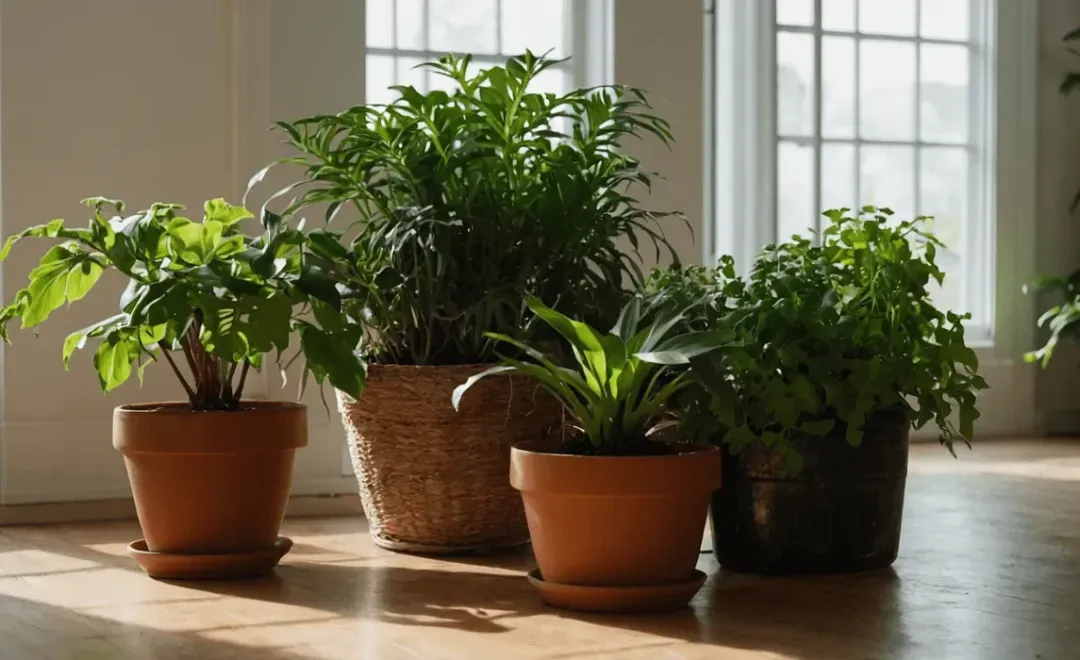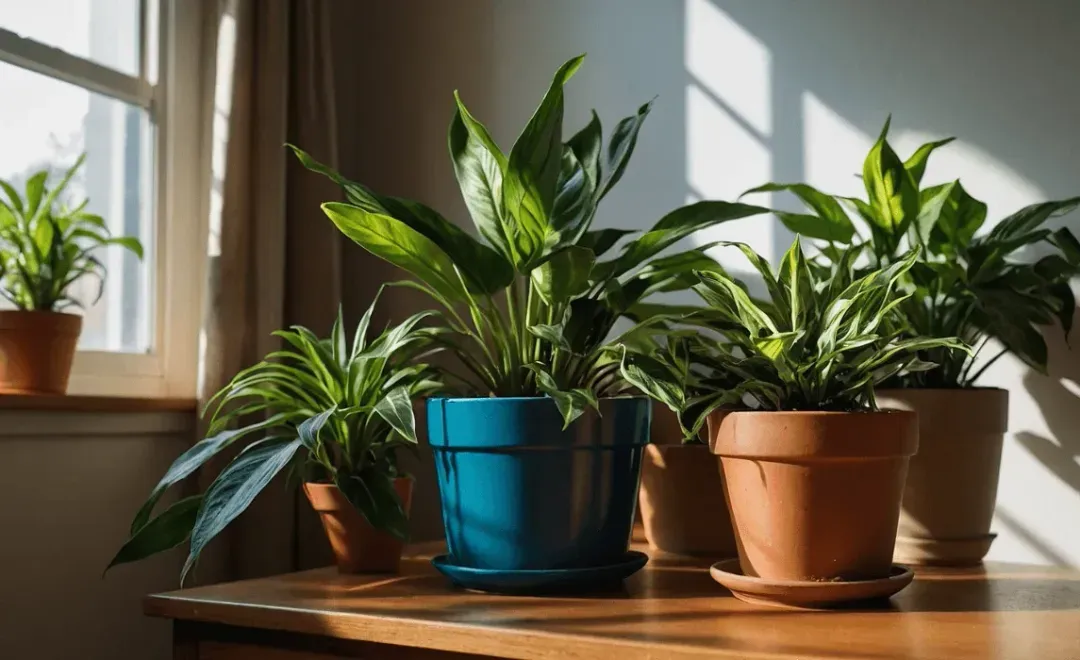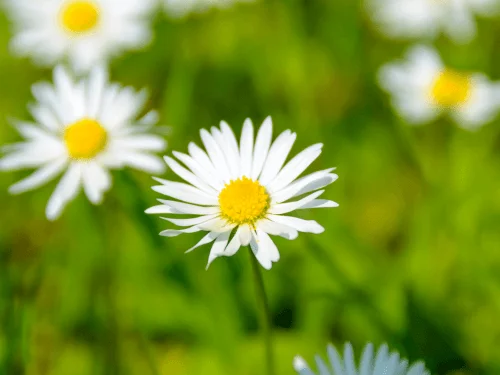Indoor Garden Ideas: Creative Gardening Ideas for a Small Space Garden
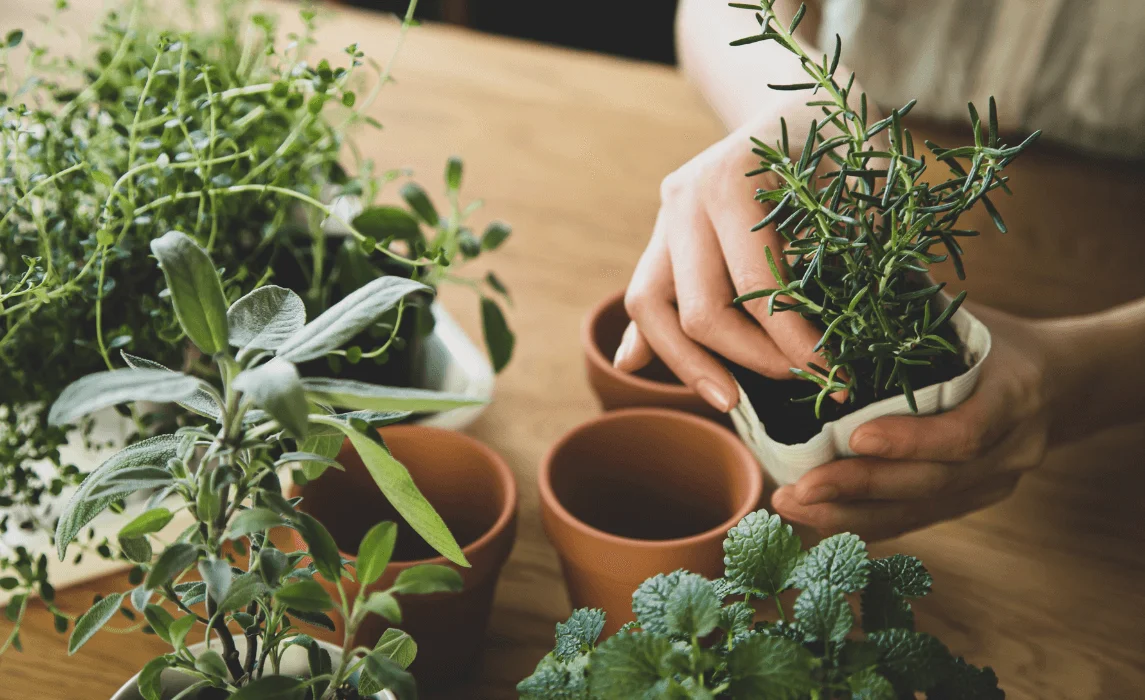
Can mango trees be grown in pots?
A: Yes, potted mango trees require large containers with well-draining soil. Regular repotting and sunlight exposure are essential to grow a healthy mango tree in a pot.
Can mango trees grow indoors?
A: Yes, young mango trees can grow indoors in large pots with sufficient sunlight or grow lights. Indoor mango trees may take longer to flower and fruit but are manageable with proper care.
How do I grow mango trees from seed faster?
A: Using warm conditions, consistent moisture, and polyembryonic seeds can speed up germination. Grafting onto seedling rootstocks is another method to grow mango trees faster and ensure quality fruit.
When do mango trees produce fruit?
A: Grafted mango trees may bear fruit in three to five years, while seed-grown trees may take five to eight years. Flowering and fruiting are influenced by climate, sunlight, and proper mango tree care.
1. How long does it take for daisies to bloom?
Plants grown from seed may take several weeks to produce their first flower buds. Most daisy plants will start to bloom in early summer, and with deadheading, they can produce a third blooming later in the season. Shasta daisies and oxeye daisies are especially reliable bloomers that can flower continuously throughout the season if given care tips such as fertilizing and proper watering.
2. Can daisies be grown in pots?
Yes! Potted plants are ideal if you have limited garden space. Make sure the pot has drainage holes and use well-draining garden soil. Daisies are also happy in containers if they get enough hours of full sun. Remember to monitor moisture: avoid too much moisture at the bottom of the pot.
3. What are the best companion plants for daisies?
Daisies pair well with bee balm, echinacea, and zinnias. These companion plants share similar sunlight and watering needs, helping your garden flourish throughout the season. They can also create a beautiful mix of single or double flowers alongside bright white petals of daisies.
Q1: How long does it take to grow a watermelon?
Watermelon growing time varies by variety. Most watermelons take about 75–100 days from planting seeds to harvest. Seedless watermelons often take slightly longer. Starting seeds indoors can give you a head start, especially in shorter growing seasons.
Q2: Can I grow watermelon in a pot or container?
Yes! Small or icebox varieties like Sugar Baby grow well in large pots (15–20 gallons). Ensure the container has good drainage, is filled with fertile, well-draining soil, and gets full sun daily. Water frequently, as pots dry faster than garden beds, and provide a trellis or allow vines to trail over the sides.
Q3: Can watermelons grow in raised garden beds?
Absolutely! Raised garden beds are ideal because they warm up faster in spring and provide excellent drainage. Space plants well, enrich the soil with compost, and mulch around vines to maintain moisture and control weeds.
Living in a small space doesn’t mean you have to give up on your gardening dreams. With a little creativity and smart planning, you can transform even the tiniest corner of your home into a lush and productive herb garden. Whether you're in an apartment, a condo, or a house with limited outdoor access, indoor gardening offers a refreshing way to bring nature indoors while growing fresh herbs for your kitchen. In this article, we’ll explore a variety of indoor garden ideas designed specifically for small spaces—perfect for beginners and seasoned gardeners alike. From clever container setups to vertical solutions and windowsill wonders, these tips will help you cultivate a thriving herb garden that fits your lifestyle, space, and love for greenery.
13 Indoor Garden Ideas
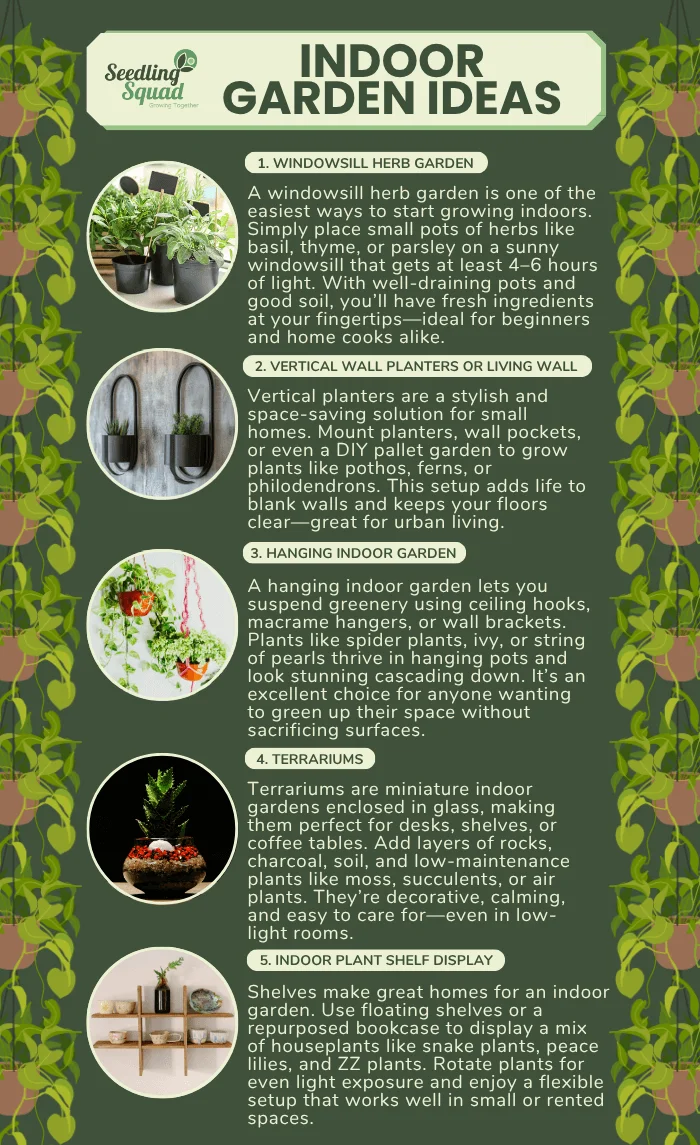
1. Windowsill Herb Garden
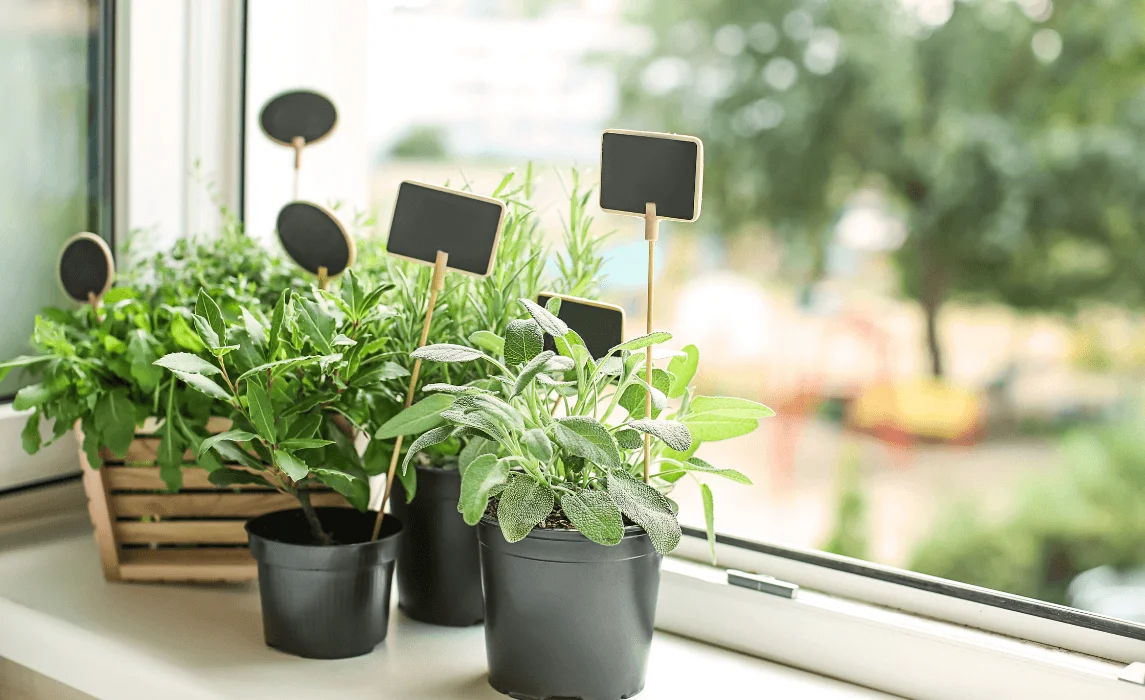
A windowsill herb garden is one of the simplest and most practical indoor garden ideas. It involves using your kitchen windowsill—or any sunny ledge—to grow small pots of culinary herbs like basil, parsley, thyme, or chives. To start, choose a windowsill that receives at least 4–6 hours of sunlight daily. Use small pots with good drainage and high-quality potting soil. Herbs thrive when watered moderately and pinched back regularly to promote new growth. This setup is especially great for apartment dwellers or those who cook frequently and want fresh herbs at their fingertips. It’s practical because herbs are low-maintenance, don’t take up much room, and grow quickly indoors. This is perfect for beginner gardeners who want a hands-on, edible introduction to indoor gardening.
2. Vertical Wall Planters or Living Wall
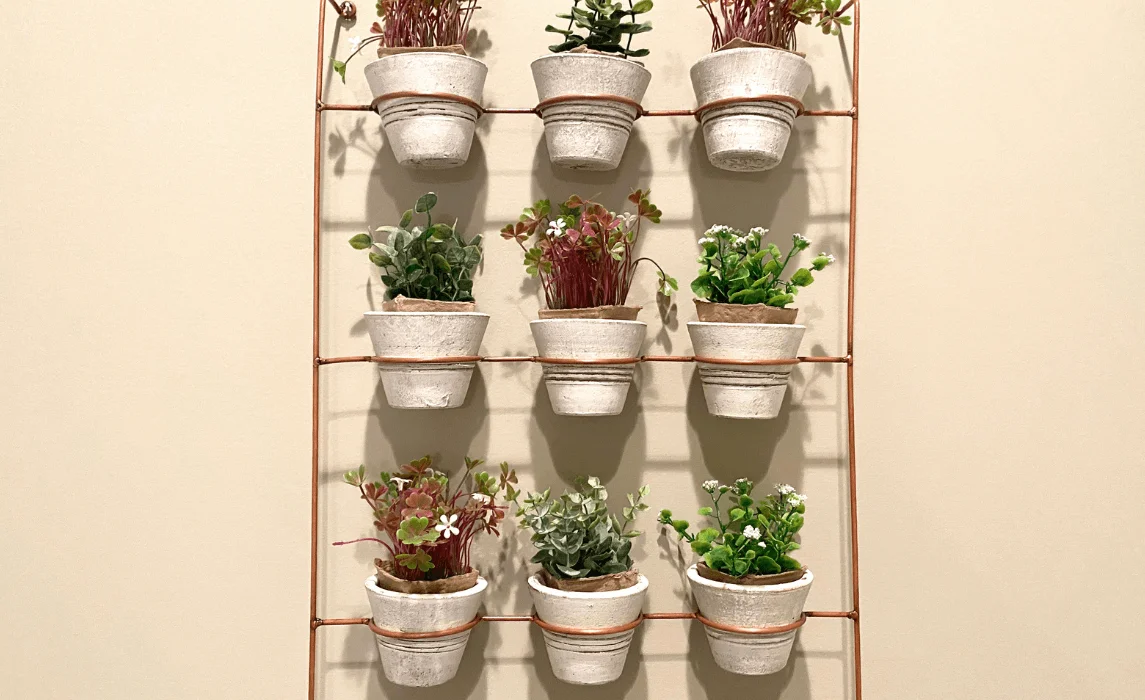
A vertical garden or living wall is a fantastic way to utilize vertical space, especially in compact homes or apartments with limited floor space. These gardens involve mounting planters, pocket fabric systems, or shelves on a wall to grow a mix of indoor plants. You can build a DIY version using a wooden pallet or purchase a ready-made wall system. Succulents, ferns, pothos, and philodendrons are popular choices because they adapt well to vertical arrangements. Living walls are beginner-friendly as they require only basic setup and maintenance and can double as a decorative statement. They're ideal for people who want to green up their home without sacrificing floor space—such as those in studio apartments or small urban homes.
3. Indoor Herb Garden in Mason Jars
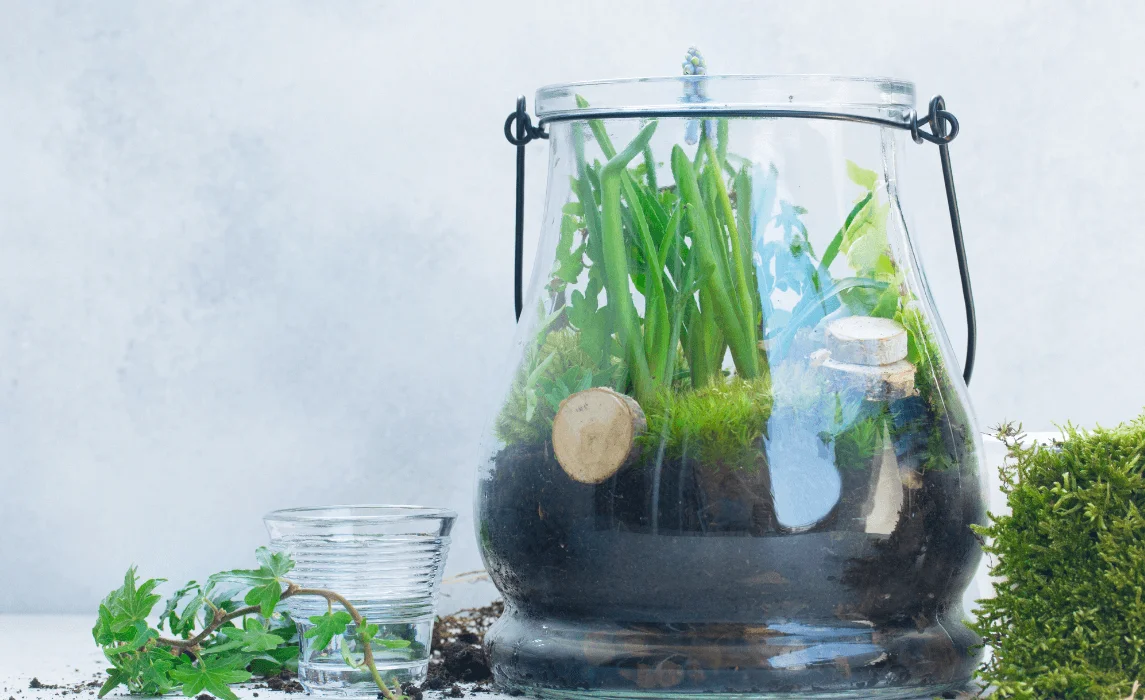
Using mason jars to grow herbs like mint, oregano, or cilantro is a stylish and budget-friendly way to create a portable indoor garden. Start by layering stones or pebbles at the bottom of each jar to help with drainage, then add potting mix and plant your seeds or starter herbs. Place the jars on a sunny shelf or hang them from a DIY wooden rack. Because mason jars are small and can be moved easily, this idea works well for renters or people who want their garden to adapt to changing light conditions. It’s practical because you don’t need a lot of materials, and it’s ideal for beginners or even kids interested in learning the basics of growing plants indoors.
4. Terrariums
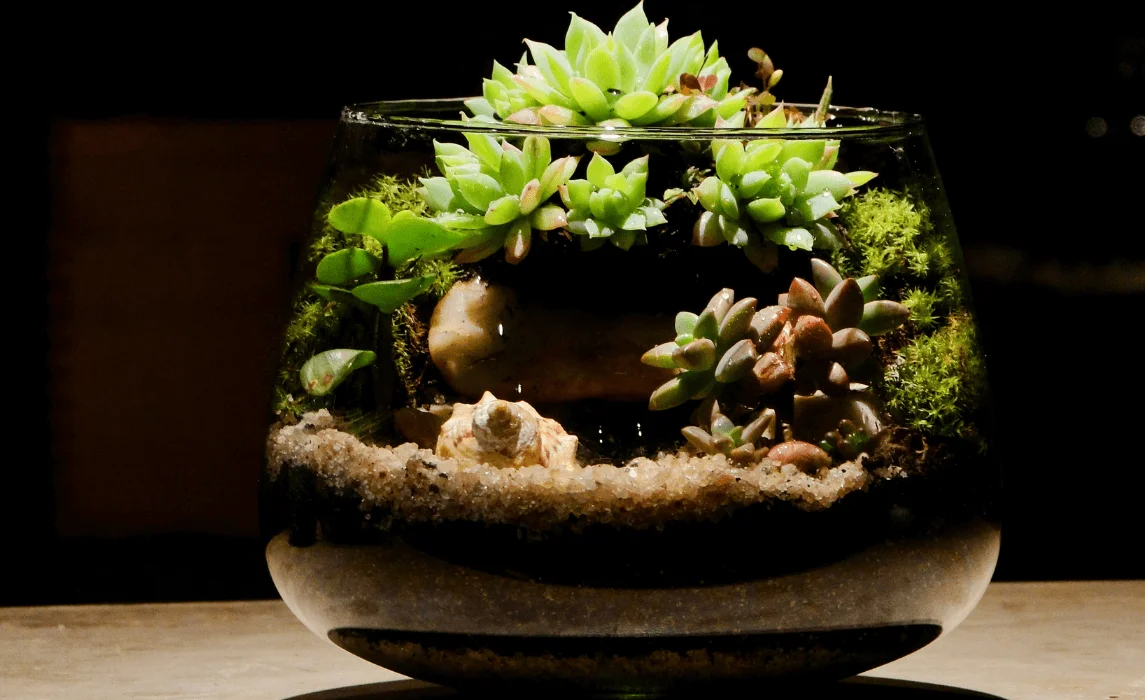
Terrariums are miniature indoor gardens enclosed in glass containers. They can be open or closed, depending on the type of plants used. To build one, start with a layer of small rocks, followed by activated charcoal (to prevent odors), then potting soil, and finally, your plants. Succulents, air plants, and mosses are commonly used in open terrariums, while ferns and tropical plants do well in closed environments. Terrariums are an excellent indoor garden option for people with little space and limited light, as they can thrive on desktops or shelves. They're particularly great for design lovers and beginners who want a decorative and low-maintenance project that brings a calming, green vibe into any indoor setting.
5. Hanging Indoor Garden
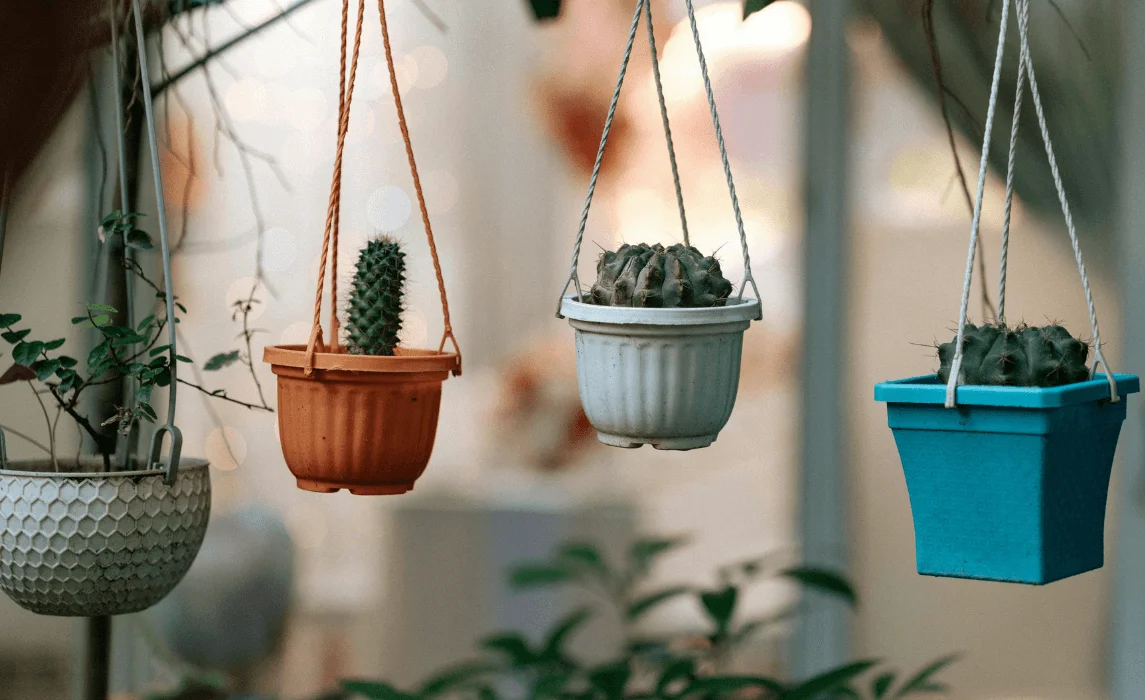
If you're short on floor or shelf space, consider a hanging indoor garden. This idea uses macrame hangers, wall hooks, or ceiling-mounted holders to suspend potted plants. Hanging plants like pothos, spider plants, string of pearls, or English ivy cascade beautifully and adapt well to indirect light. Set it up by choosing lightweight planters with proper drainage and selecting spots near bright windows. Hanging gardens are ideal for homes with limited surfaces, making them highly practical and easy to maintain with regular watering and occasional pruning. This option suits creative decorators or plant lovers looking for a whimsical and space-saving way to display greenery indoors.
6. Indoor Vegetable Garden
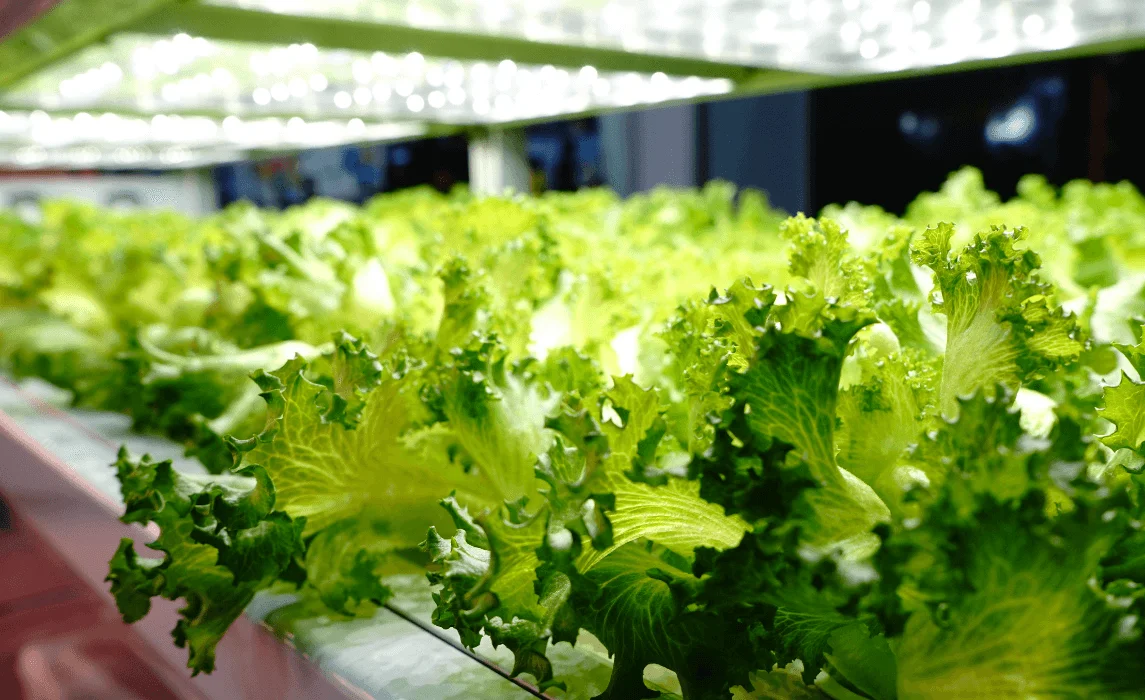
Believe it or not, you can grow vegetables indoors—even without a yard. Leafy greens like lettuce, spinach, arugula, and kale thrive in containers under grow lights or on a bright windowsill. Start by choosing a wide pot with good drainage and fill it with a high-nutrient potting mix. Sow seeds in shallow rows, keep the soil moist, and provide at least 10–12 hours of light per day using LED grow lights if needed. Indoor vegetable gardens are practical because they offer homegrown produce year-round and save money in the long run. This is a great choice for health-conscious individuals, hobbyist gardeners, or families who want to involve kids in sustainable food practices.
7. DIY Indoor Zen Garden
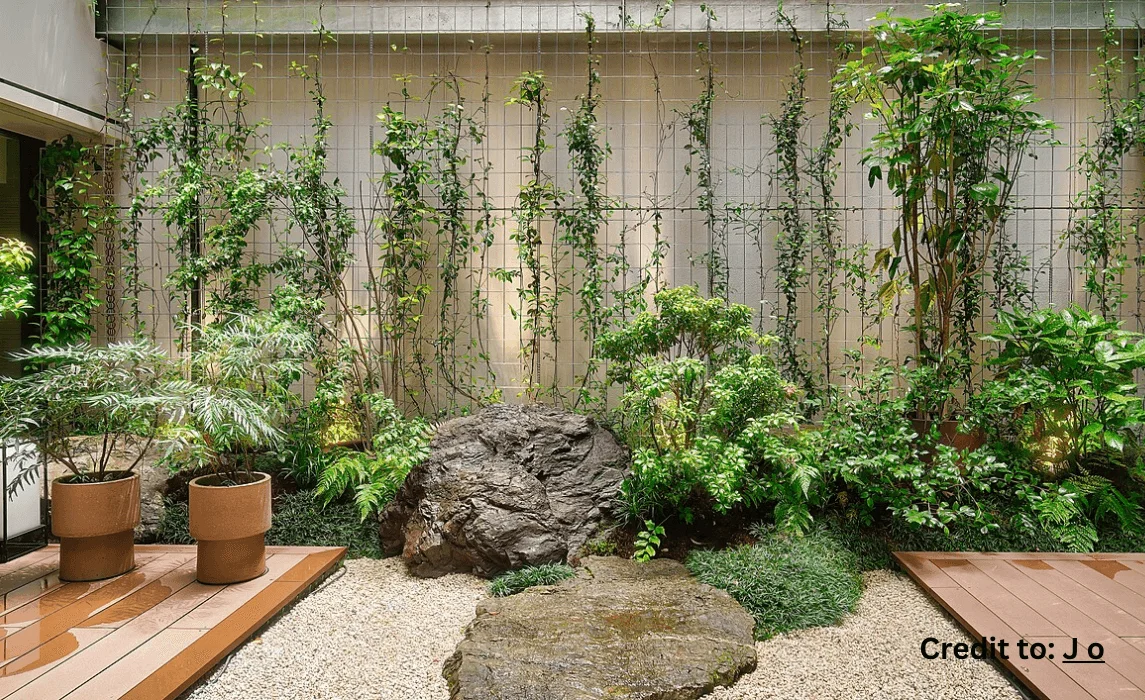
Link: https://commons.wikimedia.org/wiki/File:Good_Nature_Hotel_Kyoto_4F_courtyard_20200705-002.jpg
An indoor Zen garden blends greenery with minimalist decor, often using elements like small rocks, moss, and sand to create a tranquil space. Set up your Zen garden on a tray or shallow dish and include small potted bonsai trees, ferns, or moss balls. Add sand patterns with a miniature rake, and include stones or small statues for a calming visual effect. These gardens are not only beautiful but also stress-relieving and easy to maintain, requiring little watering and low-light conditions. A Zen garden is perfect for those who crave serenity in their home—especially suited for mindful individuals, creatives, or anyone looking to turn a desk or shelf into a peaceful retreat.
8. Indoor Jungle
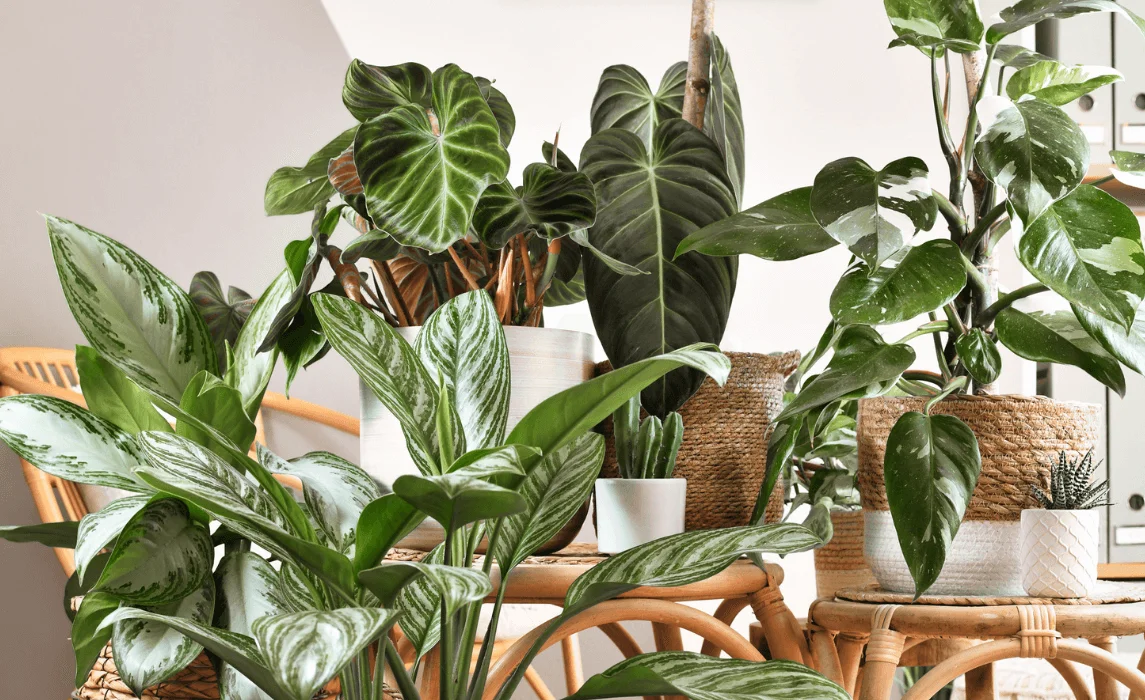
The indoor jungle idea involves filling a room—or at least a corner—with a lush variety of plants of all sizes, creating a dense and immersive green environment. Start by selecting a mix of large floor plants like rubber plants, monstera, and fiddle leaf figs, alongside medium and trailing plants like pothos and philodendron. Use stands and hanging planters to create layers, and consider investing in a humidifier for tropical plants. Although this may sound overwhelming, it's actually a great project for passionate beginners who want to dive headfirst into indoor gardening. It’s practical for anyone wanting to improve indoor air quality and aesthetics while building a vibrant, thriving plant collection. Best suited for plant enthusiasts or home decor lovers ready to embrace their inner green thumb.
9. Tabletop Succulent Garden
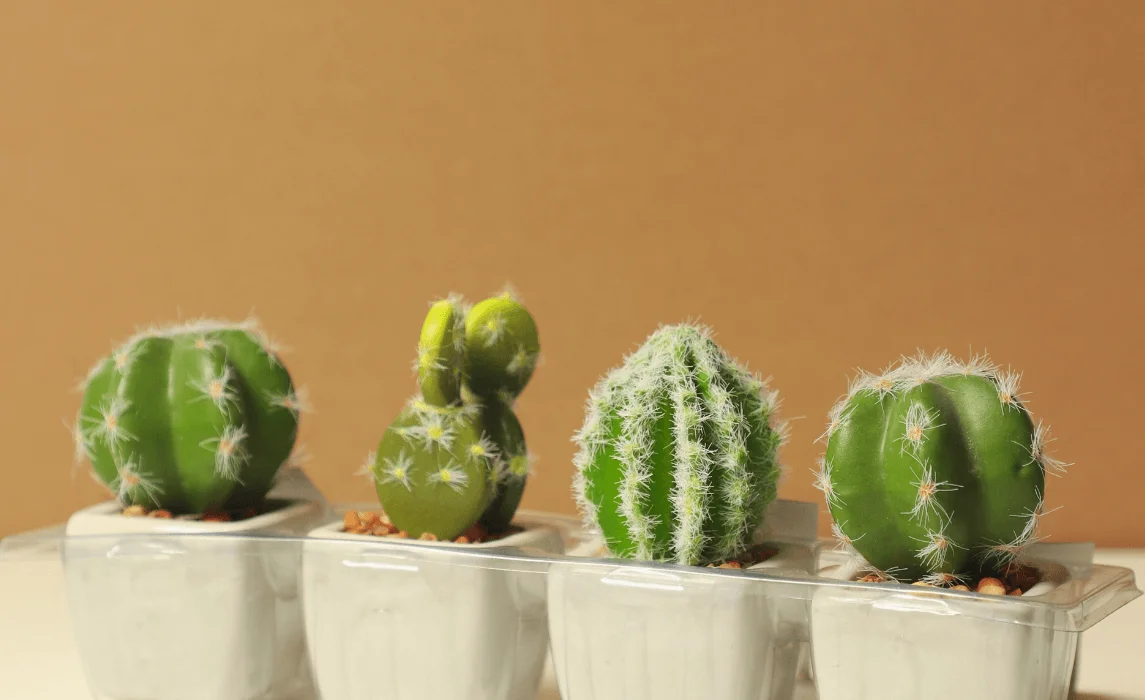
A tabletop succulent garden is a charming and low-maintenance idea perfect for sunny windows, coffee tables, or workspaces. To create one, select a shallow container or dish, fill it with sandy potting soil, and arrange a variety of succulents like echeveria, jade plant, and haworthia. These drought-tolerant plants require minimal watering and do best in bright light. Succulent gardens are practical because they’re decorative, compact, and easy to care for—even if you forget to water them for a while. They’re a beginner’s favorite, especially for people with busy schedules or those working from home who want a bit of natural beauty on their desk.
10. Indoor Cactus Corner
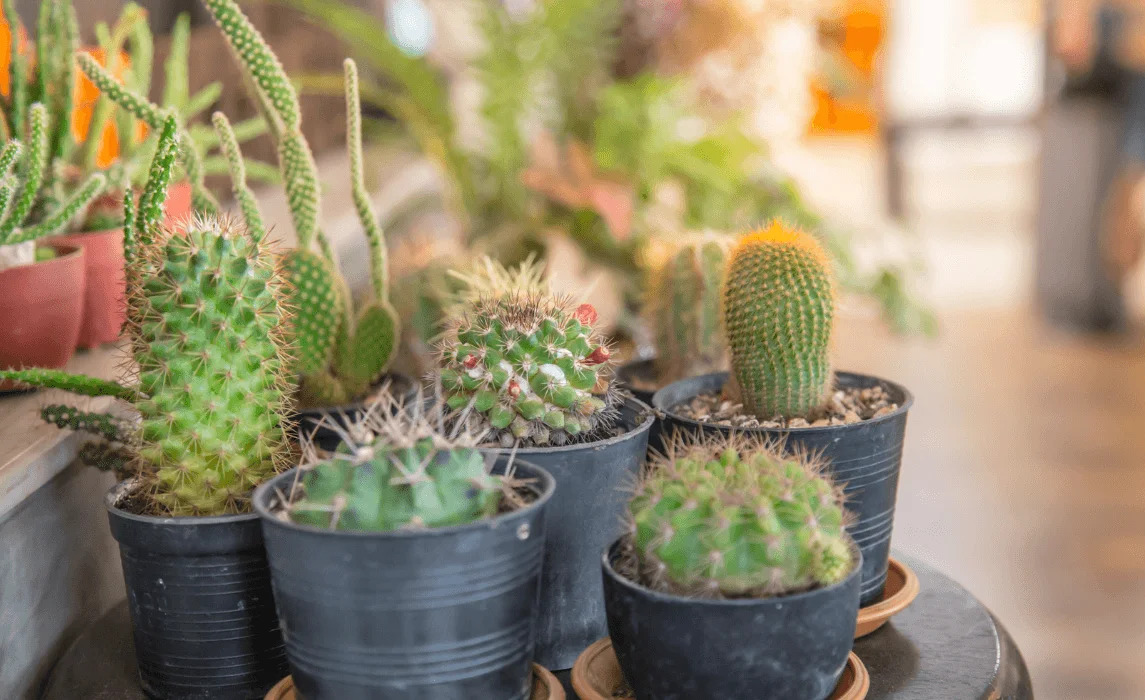
For a spiky twist on indoor gardening, dedicate a small corner or shelf to a cactus garden. Cacti are extremely low-maintenance and thrive in direct sunlight. Choose a mix of tall and compact varieties, plant them in terracotta pots with gritty cactus soil, and position them where they can soak up sun—such as a sunny windowsill or south-facing room. This idea is especially practical for people who travel often or forget to water, as cacti only need occasional hydration. It’s best suited for minimalists, apartment dwellers, or beginners who want interesting shapes and textures without the fuss of frequent plant care.
11. Indoor Plant Shelf Display
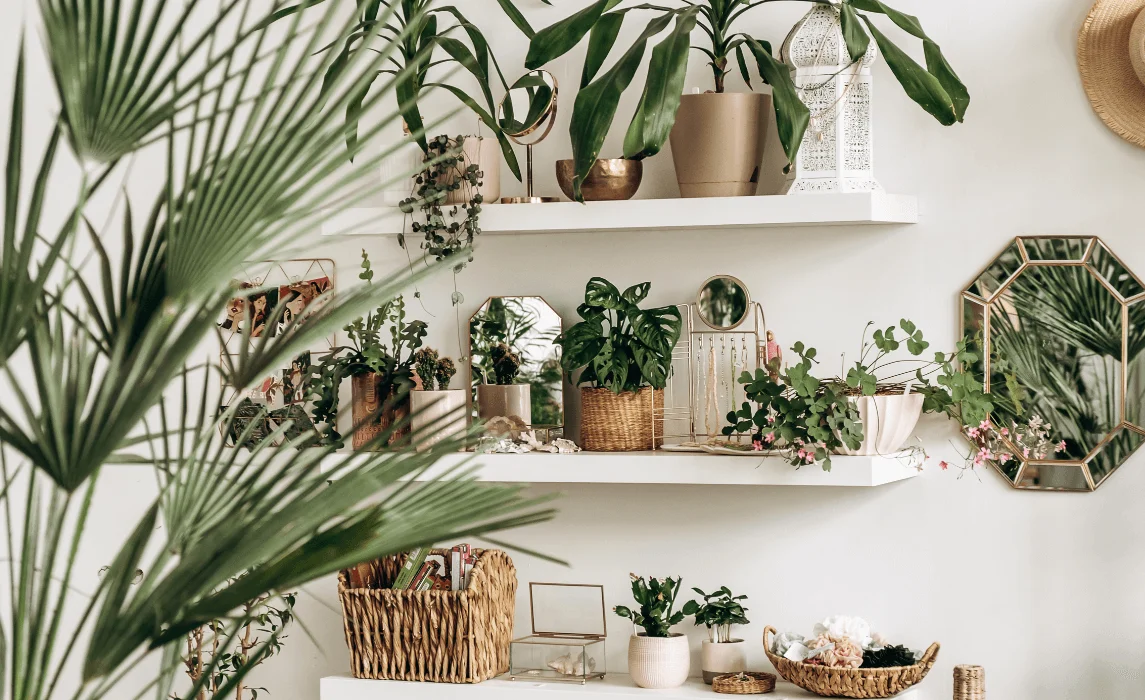
Transform any blank wall or corner into an indoor garden using shelves filled with potted houseplants. Start by mounting a few floating shelves or repurposing an old bookcase, then arrange an assortment of indoor plants by size, texture, and light needs. Snake plants, peace lilies, ZZ plants, and ferns are excellent choices. Rotate plants every few weeks to ensure even light exposure. This setup is both functional and decorative, and its flexibility makes it ideal for renters and small-space dwellers. For beginners, it’s a manageable way to collect plants gradually and build confidence in caring for a variety of houseplants.
12. Aquaponic Indoor Garden
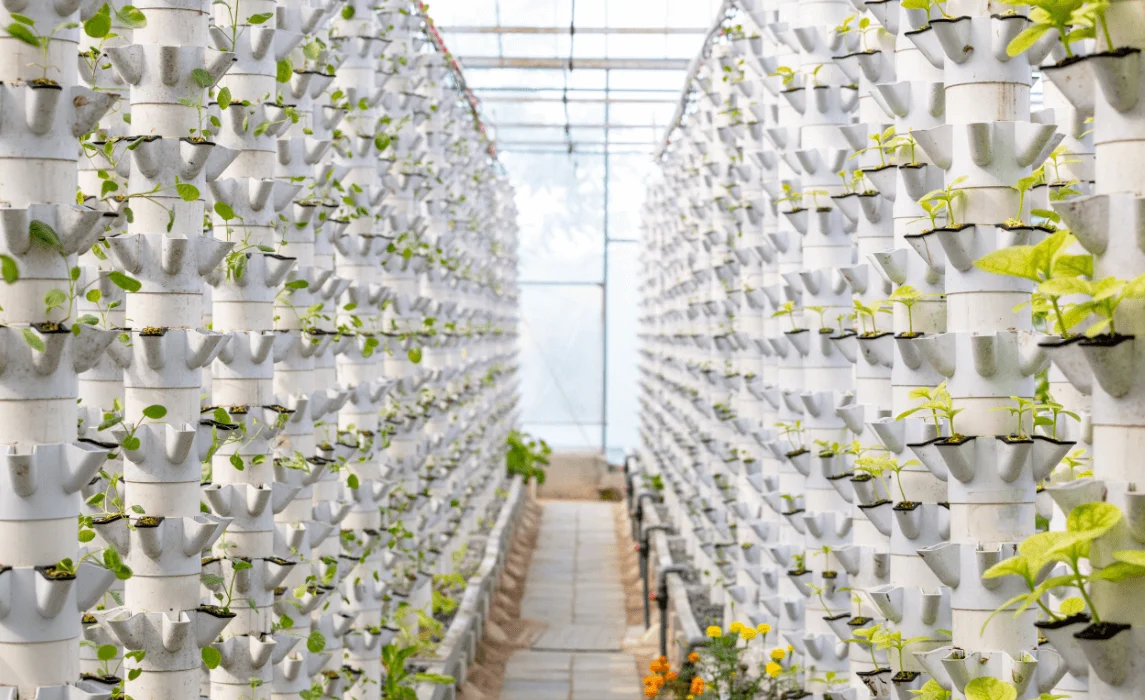
An aquaponic system combines fishkeeping with plant growing in a self-sustaining cycle. Plants grow in a soilless medium above a fish tank, where waste from the fish provides nutrients for the plants, and in return, the plants help filter the water. This setup is compact, eco-friendly, and requires minimal soil maintenance. Leafy greens like lettuce, basil, and mint thrive in aquaponic systems. It’s especially practical for people who want to grow food indoors while learning about sustainable ecosystems. Best suited for curious learners, eco-conscious individuals, or tech-savvy gardeners looking for a unique twist on indoor gardening.
13. Smart Indoor Garden Kit
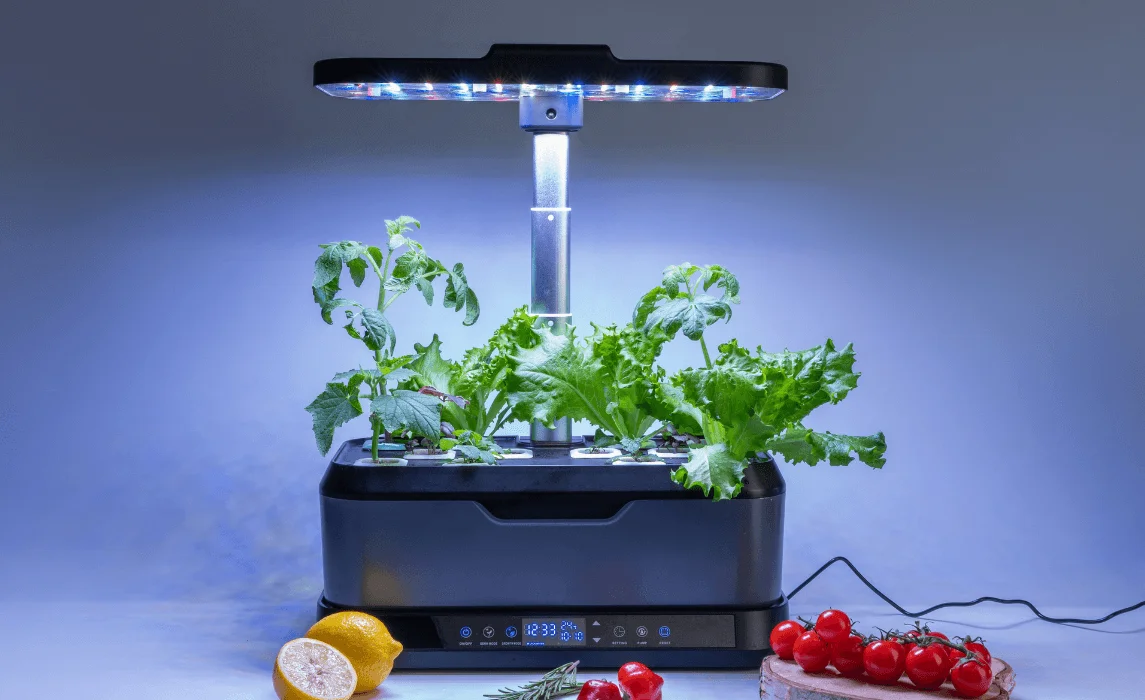
Smart garden kits are high-tech indoor gardening systems with built-in LED grow lights, automated watering, and app connectivity to monitor growth. These kits are usually compact and countertop-friendly—perfect for growing herbs, lettuce, or cherry tomatoes year-round. Simply insert pre-seeded pods, fill the water reservoir, and let the device do the rest. Smart gardens are practical because they eliminate guesswork and make indoor gardening foolproof. Ideal for busy professionals, tech lovers, or anyone with little time or gardening experience who still wants fresh produce at home.
Frequently Asked Questions (FAQ)
How do I start an indoor garden in a small space?
Start small by choosing easy-to-grow potted plants or herbs that thrive indoors. Use vertical space with shelves or hanging plants to maximize floor space. For limited areas like apartments or home offices, compact container gardening works best.
What are the best plants to grow indoors?
Low-maintenance plants like peace lilies, rubber plants, trailing plants like pothos, and indoor trees such as the fiddle leaf fig are among the best indoor options. They adapt well to indirect light and are easy to care for.
What are the easiest herbs to grow indoors?
Herbs like basil, mint, parsley, and thyme are some of the best herbs to grow indoors. They grow well on sunny windowsills or under LED grow lights, especially during the winter months when natural light is limited.
Can I grow vegetables indoors?
Yes, indoor vegetable gardening is possible with the right setup. Leafy greens, cherry tomatoes, and radishes are great vegetables to grow indoors. Use containers with drainage holes, provide enough light (natural or LED grow lights), and water when the soil feels dry to avoid root rot.
What’s the best lighting for growing plants indoors?
Plants that are easy to grow still need adequate lighting. If your space lacks natural light, using grow lights (especially LED grow lights) can mimic sunlight, ensuring gardening success even during darker seasons.


